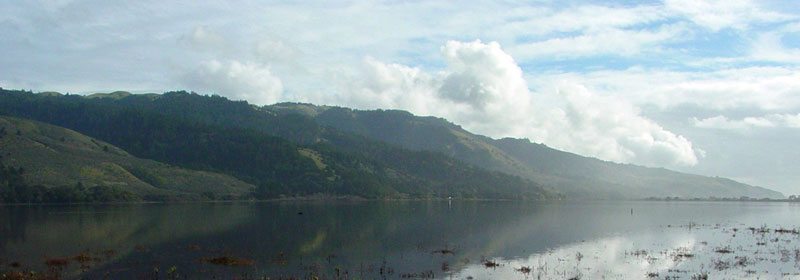Birding, Miwok-style
By Ivan Samuels
When was the last time you went birding without binoculars? Most birders would consider this a bad idea for obvious reasons. But with experience, you would be surprised how many species you can identify without optics. Birding by ear, by definition, implies that you don’t even need to see the bird for species recognition. And in many cases, you already know the species you are watching as you begin to raise your binoculars.
In thinking about these questions, I started to wonder what a “big day” would have been like for Native Americans in the Bay Area during centuries past. There are obvious differences of course, not the least of which is the amount of habitat that once existed. Some species once common are now rare or extirpated, while others once absent now occur here. But the variety of habitats once present can still be found today, and I started to daydream about what it would take to do a “Native American Big Day.”
Thinking beyond optics, the list quickly grows – no binoculars, scope, car, bike, flashlight, watch, playback equipment, phone, etc. etc. But the rule is: If they could have done it, so can you. You can go owling, but no alarm to wake you up or light to guide your way. You can’t use an iPod, but pishing or whistling songs is perfectly acceptable. You can’t drive, so you will need to plan carefully to insure you can hit the most habitats possible on foot.

And you won’t be able to scope waterbirds, but with the aid of a kayak you can get pretty close to them. It’s not important that your kayak is made out of plastic. The point is, they could have done it. And we can quickly agree that the time to try is during spring, when bird song and brighter plumages greatly help your IDs.
So once I heard that the Golden Gate Bird Alliance Birdathon was to be a spring tradition, the challenge was on! I soon settled on the Bolinas area, as I regularly bird this species-rich area of west Marin County, and many different habitats occur within a short distance. Furthermore, the Bolinas Lagoon itself seemed perfect for the kayak portion of the adventure. The Coast Miwok is the group that once inhabited this diverse ecosystem, and so was born my team, “Miwok-Style.”
I have done this count twice now, alone in 2011 and with fellow San Francisco birder Brian Turner in 2012, both times in mid-April. Both years followed roughly the same route, waking each time to the onset of a vigorous dawn chorus, which of course means we slept through owling! Walking through a mix of riparian, mixed conifer-hardwood, oak woodland, and chaparral, we are immersed in song while IDs by sight remain few. Thanks to our ears, we come away having detected nearly all the species one would expect in these habitats, including winter resident carryovers like Varied Thrush.

Horseshoe Hill Road, which connects Bolinas to Highway 1, also supports more good habitat and relatively light traffic. Here we pick up additional woodland and grassland birds in the wild backyards that border the road, including a distant White-throated Sparrow that sang once. Arriving into town, we don’t know what time it is, but we know the high tide is going to be late morning so we launch the kayak and paddle towards waterbirds until we can see what they are. This proves to be a huge asset, as you can imagine the frustration of squinting at waterbirds from shore.

By mid-day we are hoofing it through town in the direction of Duxbury Reef, our sole opportunity for seabirds and rocky shorebirds. Here, I will admit, the advantage of optics hits the Miwok hard. We do reasonably well with close birds and lucky flyovers, but those specs on the horizon pass without comment from our team. After maxing out on the bluffs, we notice that the tide has receded enough to allow us to walk back into town via the beach, and we add a few species missed at the reef.
Sunset is close, and we are spent. We must have walked 15 miles or so and can’t think of where we could walk or paddle to add anything else, so the countdown begins.
Last year we had 105 species, and 102 in 2011, not bad! But more than that, we came away with a rich experience in nature, absent all of the distractions of technology. Beginning birders will understandably fear this style of birding. But for those with a solid knowledge of songs and calls, and an even deeper appreciation of how to turn a GISS (General Impression, Size & Shape) into an ID, I challenge you to spend a day birding like it used to be done for eons.
—————————
Ivan Samuels is a native San Franciscan birder and naturalist. His professional interests, besides birds, include ecology, forestry, conservation biology, and permaculture. With free time he can most often be found on his bike, and more recently on a kayak or mountain climbing. He lives in the Presidio of San Francisco and plans to do Miwok-style birding again this April for Birdathon 2013.
Create your own Birdathon trip like Ivan! Or join one of sixteen guided Birdathon field trips led by expert Audubon birders, and help raise money to support Golden Gate Bird Alliance’s conservation and education programs. For Birdathon information and registration, please see https://goldengatebirdalliance.org/birdathon.
